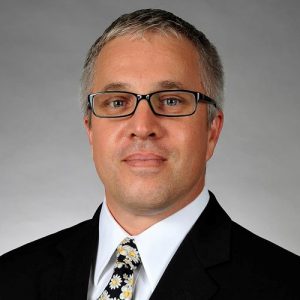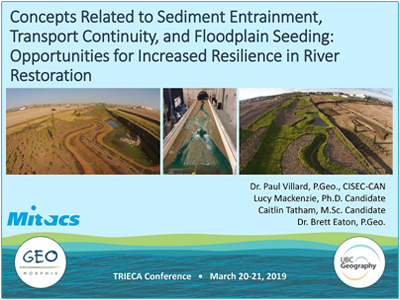TRACK 2
New Concepts Related to Sediment Entrainment, Transport Continuity, and Floodplain Seeding that Offer Opportunities for Great Resilience to River Restoration Projects
ABSTRACT
In the face of hydrological and sediment regime changes associated with urbanization, climatic change and storm events, the long-term success of watercourse restoration will require resilient designs.
Adaptive management is advertised as the means to address unforeseen adjustments, but this method relies heavily on monitoring and future resources.
A better approach is to implement designs that allow the channel to adjust naturally.
This presentation introduces several concepts that offer greater resiliency for constructed channels to adjust to changes in hydrology and sediment regime.
Many design approaches match channel form but ignore active processes. To improve long-term stability and resiliency in large-scale channel realignments, we need to acknowledge sediment continuity, focus on sediment size distributions, and identify and provide for long-term sediment sources.
Sediment transport models can assess continuity through proposed channels, and can predict long-term trends such as aggradation or degradation.
Current academic research suggests that D84 (the coarse tail) is a better indicator of entrainment than the traditional D50 (median grain size).
Flume experiments also strongly suggest that seeding the floodplain with coarser materials results in substantial reduction of bank erosion and stable planform types.
We can learn from past restoration projects — but we should also look to current research to inform our designs and reduce our reliance on intervention.
Learning Objectives
1. Opportunities to improve resiliency in constructed channels are limited by ignoring sediment continuity through designs and focusing on single grain sizes in hydraulic sizing and not sediment size distributions.
2. Insights from current academic research can inform the quantity and types of sediment required for successful floodplain seeding and resiliency in large-scale channel realignments.
3. We gain substantial insight from past restoration projects, but we also need to entertain new ideas and concepts to reduce our reliance on intervention and allow channels to adjust naturally to changes in hydrology and sediment supply.
ABOUT THE PRESENTER

Paul Villard
Dr. Paul Villard has been involved in research related to geomorphology for many years. His research has covered topics including:
- Sediment transport
- Channel evolution
- Measurement techniques
- Urban impacts
- River restoration
Paul has been involved in projects throughout Canada, the US and overseas. He is currently the director and principal geomorphologist at GEO Morphix Ltd.

